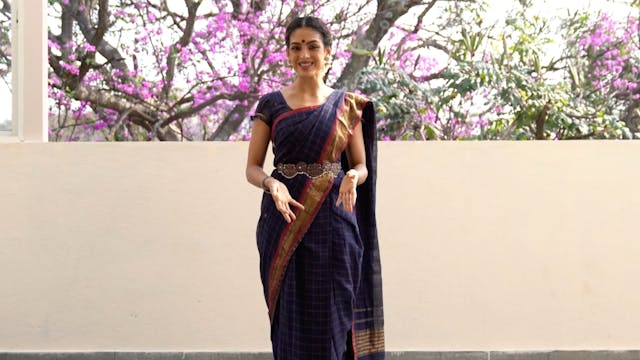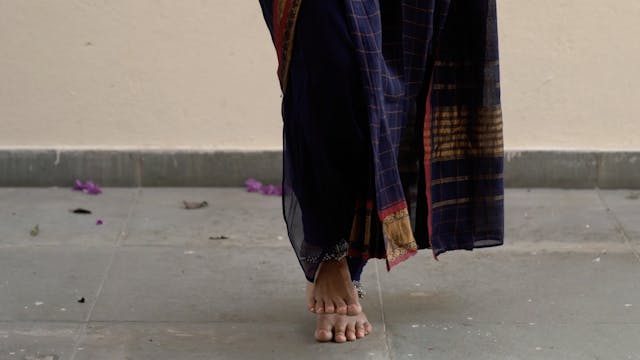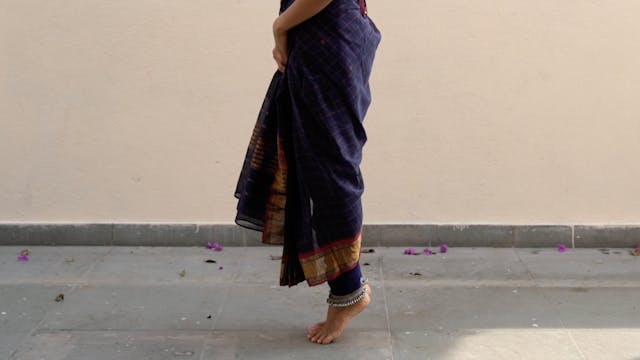The shins/ shanks are considered one of the Upāngas, or minor limbs according to the Nātyaśāstra
The movements are used not only for the precise control in the execution of Nritta but also to communicate meaning in the context of gesture.
Please refer to the Shloka below for pronunciation. Please note that the separate movements of the head when put together in a Shloka form 'Sandhis', or compound words in the Sanskrit language. Words like 'ca', 'thatha', mean "and", "also". The separate words for each movement are also given below the shloka.
Āvartitam natam ksiptamudvāhitamathāpi vā
parivrttam tathā caiva janghākarmāni pañcadhā
Āvartitā
Natā
Ksiptā
Udvāhitā
Parivrttā
Up Next in Natyashastra: Angas & Upangas
-
Gulphā bheda Introduction
The Ankle is considered one of the Upāngas, or minor limbs according to the Sangīta Ratnākara.
Introduction to the movements of the ankle.
-
Gulphā bheda Shloka
The Ankle is considered one of the Upāngas, or minor limbs according to the Sangīta Ratnākara.
The movements of the ankle are important in pure dance and in emotive contexts.
Please refer to the Shloka below for pronunciation. Please note that the separate movements of the head when put togethe...
-
Pārśni bheda Shloka
The heels are considered one of the Upāngas, or minor limbs
The movements are used not only for the precise control in the execution of Nritta but also to communicate meaning in the context of gesture.
Please refer to the Shloka below for pronunciation. Please note that the separate movements ...


